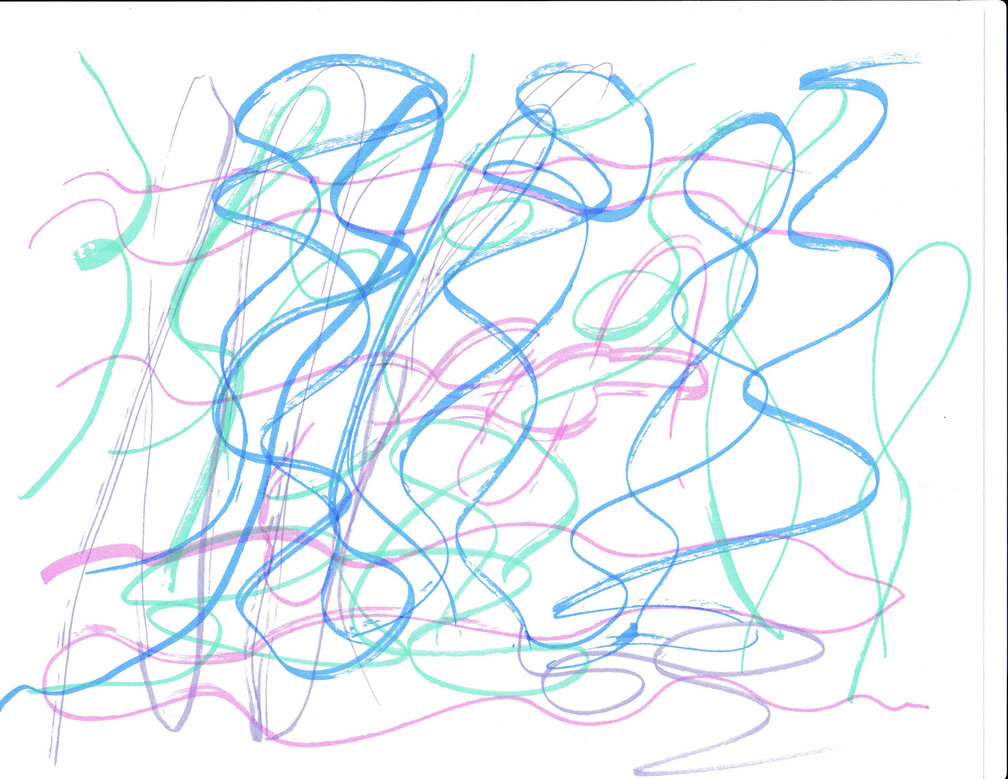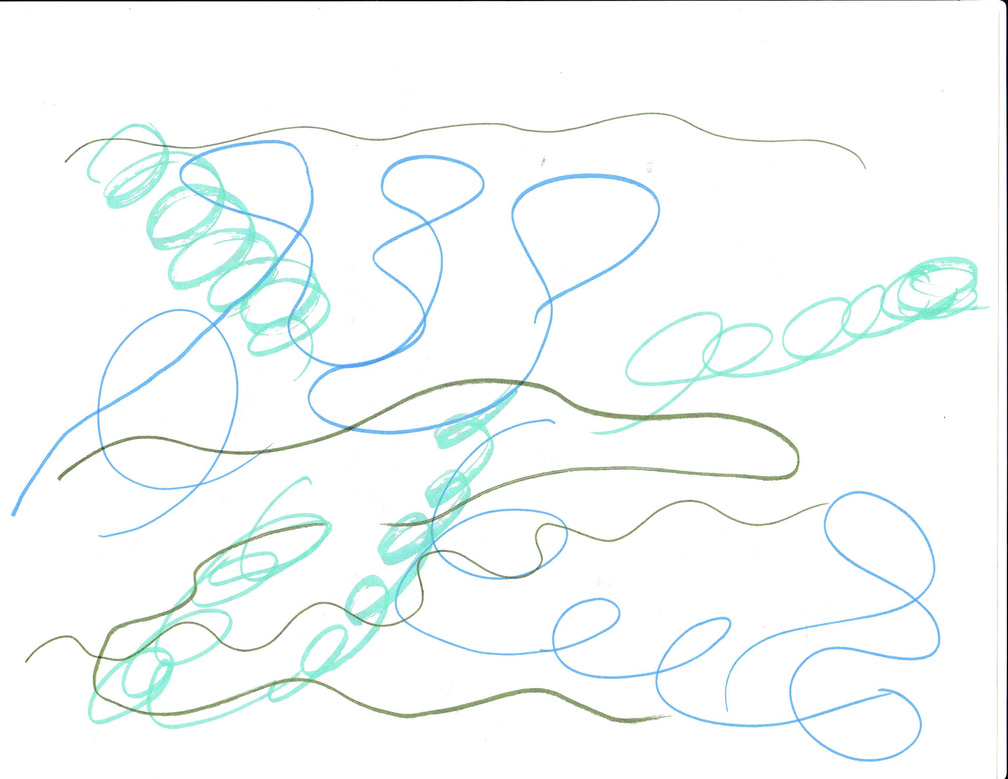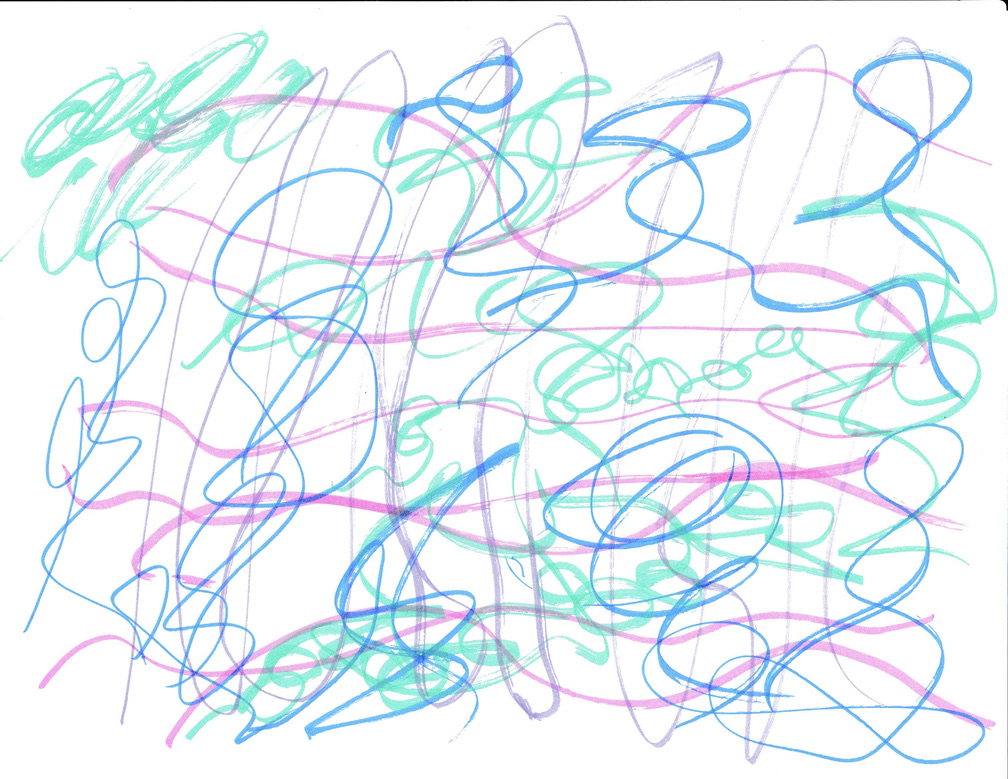OPTION 3: SOUND MAPPING
1. Spend at least 20 minutes outside in nature.* This could be in your yard, a park, on an apartment balcony, etc. Be still (seated, lying down) or slow (standing, walking) so that you can be present to your surroundings. Just be in the space for 20+ minutes, interacting with nature and noticing your 5 senses (sight, smell, touch, taste, hear).
2. Map out the sounds that you hear using colour, marks, lines, and shapes. For this map, pay special attention to colour and use different colors for different sounds.
3. Photograph your sound map to submit along with your journal entry.
4. Journal entry: Complete a 500-700 word, double-spaced journal write-up that explores you artistic process and applications to teaching.
I decided to do option 3 because it appealed to me the most. However, it has been incredibly cold outside which limited me quite a bit during this art piece. To adapt to the weather, I sat up a table by a window near the back door of my house in order to still create the feeling of being outside. Then, I found a Youtube video with winter sounds that would work well for sound mapping. This video reminded me of the winds that have been occurring in Regina. I used a light pink for some of the calmer and steady noises occurring which are mainly horizontal lines across the page. The purple lines represented more steady noises that did not portray any whistling but were louder than the other steady noise and are drawn vertically. The dark blue resembled slower whistling noises that occurred with the swirls on the paper resembling the whistles. Lastly, the light green resembled fast whistling noises that were drawn as tighter swirls.
While I was translating these sounds into a sound map, I noticed quite a few things. First of all, I chose what I feel are calmer colours for the vertical and horizontal lines. However, when translating the whistling noises I used a dark blue or light green. I feel that the dark blue and light green stand out to me more and were also a strong part of the sounds. While drawing what I heard, I decided to close my eyes for a couple of minutes to allow for drawing based solely on the noise, instead of just the scenery. When I did this, it seemed that the swirls appeared to be more intense and covered a larger portion of the page. The image attached that depicts the drawing of my eyes closed can be looked at on the far-right within the attached gallery.
When I looked back at the sound map, I mainly saw chaos with a short focus of calmness. The swirls seemed to cover quite a large portion of the page and often overlapped the lines. The ways that I drew the sounds also appeared to look a lot like how I picture wind would look. Additionally, while drawing these sounds I mainly thought about chaos whenever the wind began to whistle again. Then, I felt a sense of relief when the whistling stopped, even if it was only for a short period of time. Lastly, while hearing these noises I thought of the awful snowstorm that occurred this winter in Regina. The wind was whistling constantly, but when it calmed down for a moment, it felt like a sense of relief.
I believe that this activity could easily be implemented in my classroom. Since I plan to teach the younger grades, challenges may arise if the activity involves lots of writing or focus. However, I have noticed while working at a Preschool that young children love to draw what they are feeling onto paper. Therefore, for possibly a combination of art and science classes, we would sit outside on the school playground and draw what is heard. Each student would have their own paper and bring their individual pencil cases out that may contain markers, crayons, or pens. This would also incorporate science because the students could explain the noises heard and identify what it could possibly be.
This activity definitely aligns with my personal teaching philosophy because of the process-based component. Each of these children’s creations is going to look different ranging from the colours to shapes being used. This allows for a student’s imagination to flourish, without any restrictions. I strongly believe that my students should have control over their creations and have it learner-centred. This means that the student is creating something that they want to do, which enhances engagement and interest.


